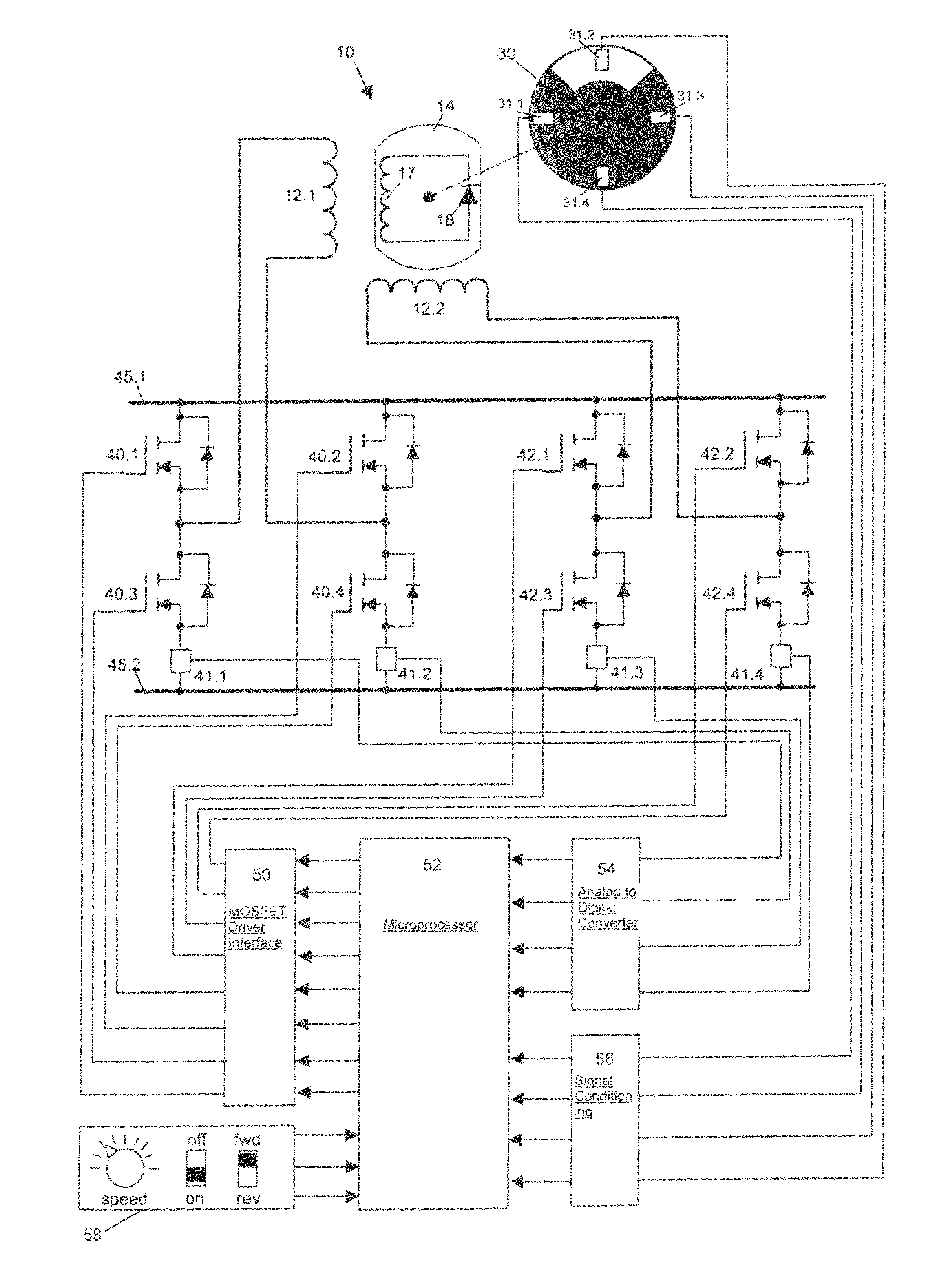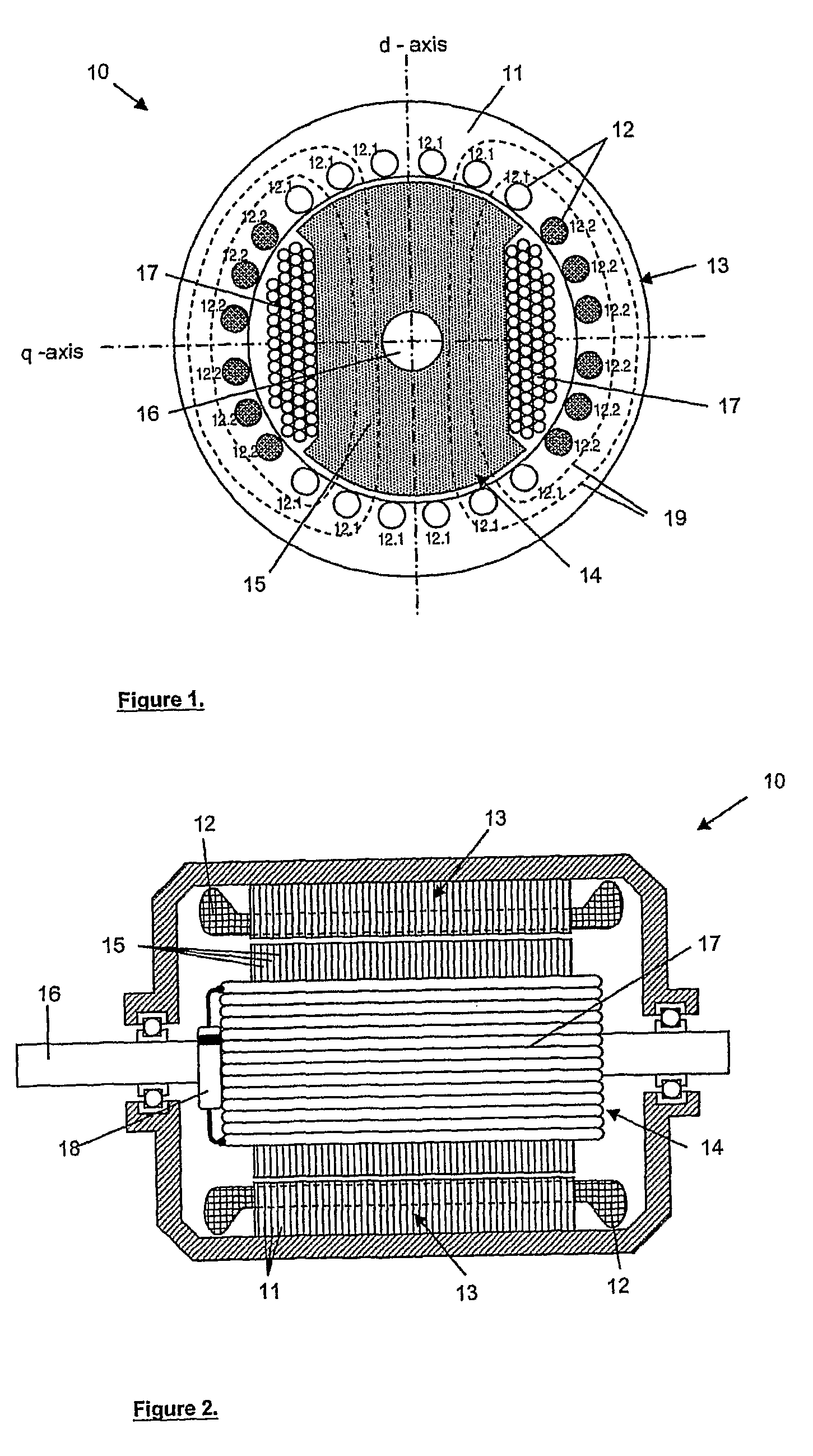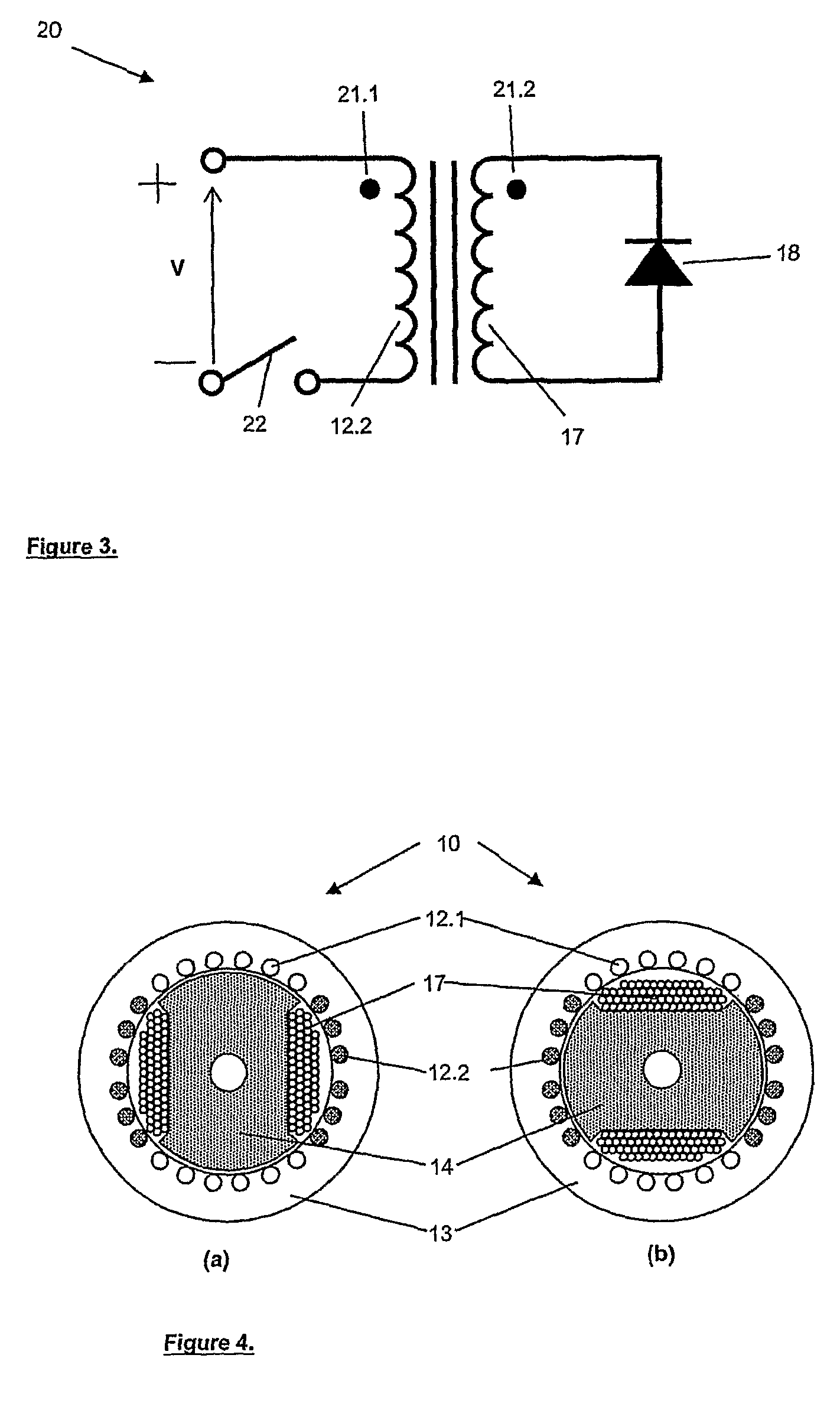Electric motor
a technology of electric motors and synchronous motors, applied in the direction of motor/generator/converter stoppers, dynamo-electric converter control, etc., can solve the problems of increasing maintenance requirements, complex slip-ring synchronous motors, and simple and cheap manufacturing of induction motors, so as to improve the efficiency of motors and effectively capture the magnetic flux density
- Summary
- Abstract
- Description
- Claims
- Application Information
AI Technical Summary
Benefits of technology
Problems solved by technology
Method used
Image
Examples
Embodiment Construction
[0030]With reference to the accompanying drawings, an electric motor, in accordance with the invention, is generally indicated by reference numeral 10.
[0031]Referring to FIGS. 1 and 2, the outer member of the motor 10 consists of packed slotted steel laminations 11 for holding the armature windings 12, which together constitute the stator 13. The armature windings 12 are further divided into two separate windings 12.1 and 12.2 constituting two separate phases.
[0032]Similarly, the inner member consists of packed steel laminations 15 relatively fixed to a drive shaft 16 with a field winding 17 terminating in the selective switch being a freewheeling diode or rectifier 18 in this embodiment which collectively constitute the rotor 14 being able to rotate relative to the stator 13.
[0033]It is to be appreciated that, for the purposes of explanation, a reference coordinate system d-q is shown on FIG. 1. This coordinate system is rotatively associated or referenced to the rotor 14. Regardin...
PUM
 Login to View More
Login to View More Abstract
Description
Claims
Application Information
 Login to View More
Login to View More - R&D
- Intellectual Property
- Life Sciences
- Materials
- Tech Scout
- Unparalleled Data Quality
- Higher Quality Content
- 60% Fewer Hallucinations
Browse by: Latest US Patents, China's latest patents, Technical Efficacy Thesaurus, Application Domain, Technology Topic, Popular Technical Reports.
© 2025 PatSnap. All rights reserved.Legal|Privacy policy|Modern Slavery Act Transparency Statement|Sitemap|About US| Contact US: help@patsnap.com



